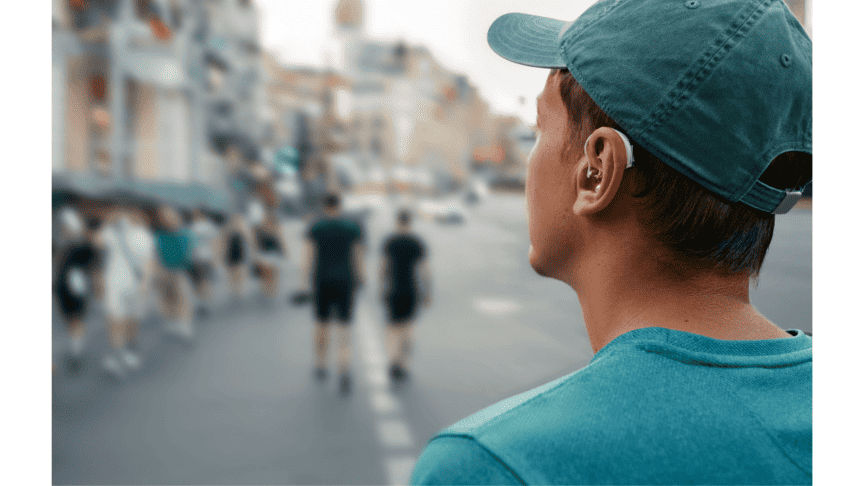Our ability to engage with the world hinges on the accessibility of public spaces. For individuals with hearing aids, the question of compatibility in these environments is more than a matter of convenience – it’s a fundamental aspect of inclusion and equal participation. In this exploration, we shed light on the importance of advocating for hearing aid compatibility in public spaces, ensuring that the sounds of life are accessible to all.
The Soundscape of Inclusion: Understanding Hearing Aid Compatibility
Imagine a bustling coffee shop, a vibrant community center, or a busy transportation hub. In these spaces, the cacophony of sounds forms the backdrop of human interaction. However, for those with hearing aids, this can become a challenge if the environment is not designed with compatibility in mind.
Challenges Faced by Hearing Aid Users:
- Telecoil Compatibility:
- Many hearing aids are equipped with a telecoil, a small coil of wire that allows users to connect directly to compatible sound systems. However, the availability of telecoil-compatible systems in public spaces is not yet widespread.
- Background Noise and Acoustic Design:
- Public spaces often pose challenges in managing background noise. Inadequate acoustic design can make it difficult for individuals with hearing aids to discern speech or important announcements.
- Public Address Systems:
- While public address systems are ubiquitous, their clarity and compatibility with hearing aids vary. Insufficient volume, distorted sound, or lack of direct connectivity options can hinder effective communication.
Advocating for Accessibility: A Collective Responsibility
- Raising Awareness:
- The first step towards fostering hearing aid compatibility is raising awareness. Individuals, community groups, and advocacy organizations can play a vital role in educating the public and businesses about the needs of those with hearing aids.
- Engaging with Businesses and Public Spaces:
- Encouraging businesses and public spaces to invest in hearing aid-friendly technologies is paramount. This includes ensuring that sound systems are equipped with telecoil compatibility and implementing acoustic design principles that prioritize clarity.
- Promoting Inclusive Design:
- Inclusive design goes beyond meeting basic accessibility standards. It involves creating spaces and systems that consider the diverse needs of all individuals, including those with hearing aids. This encompasses everything from seating arrangements to signage and technology integration.
- Supporting Legislative Measures:
- Advocacy extends to supporting and promoting legislative measures that mandate hearing aid compatibility in public spaces. By incorporating such requirements into accessibility regulations, we can ensure a more inclusive and equitable environment for all.
Technological Innovations: Paving the Way for Inclusion
- Bluetooth Connectivity:
- The integration of Bluetooth technology in public spaces allows individuals with hearing aids to connect seamlessly with various audio sources, from information kiosks to multimedia presentations.
- Induction Loop Systems:
- Induction loop systems, which transmit audio signals directly to telecoil-equipped hearing aids, are gaining popularity. These systems create designated areas with clear audio signals, enhancing the hearing experience for users.
- Mobile Apps for Accessibility:
- The development of mobile apps that provide real-time captioning or assistive listening features contributes to a more accessible experience in public spaces. These apps can be synchronized with hearing aids, offering a personalized solution.
The Ripple Effect of Accessibility: A Win-Win Scenario
Ensuring hearing aid compatibility in public spaces is not just about meeting a specific need – it’s about creating environments that benefit everyone. Improved sound systems, clearer announcements, and inclusive design elements benefit individuals with hearing aids, the aging population, and those with temporary hearing impairments.
By championing accessibility, we create a ripple effect that extends far beyond the immediate impact on hearing aid users. It transforms public spaces into welcoming arenas where everyone can engage fully, fostering a sense of belonging and community.
Conclusion: A Harmonious Future Awaits
As we advocate for hearing aid compatibility in public spaces, we embark on a journey toward a more harmonious and inclusive future. The sounds of laughter, conversation, and shared moments should resonate equally for all individuals, regardless of their hearing abilities.
By working collaboratively – as individuals, businesses, and communities – we can orchestrate a future where accessibility is not just a goal but a shared commitment.


